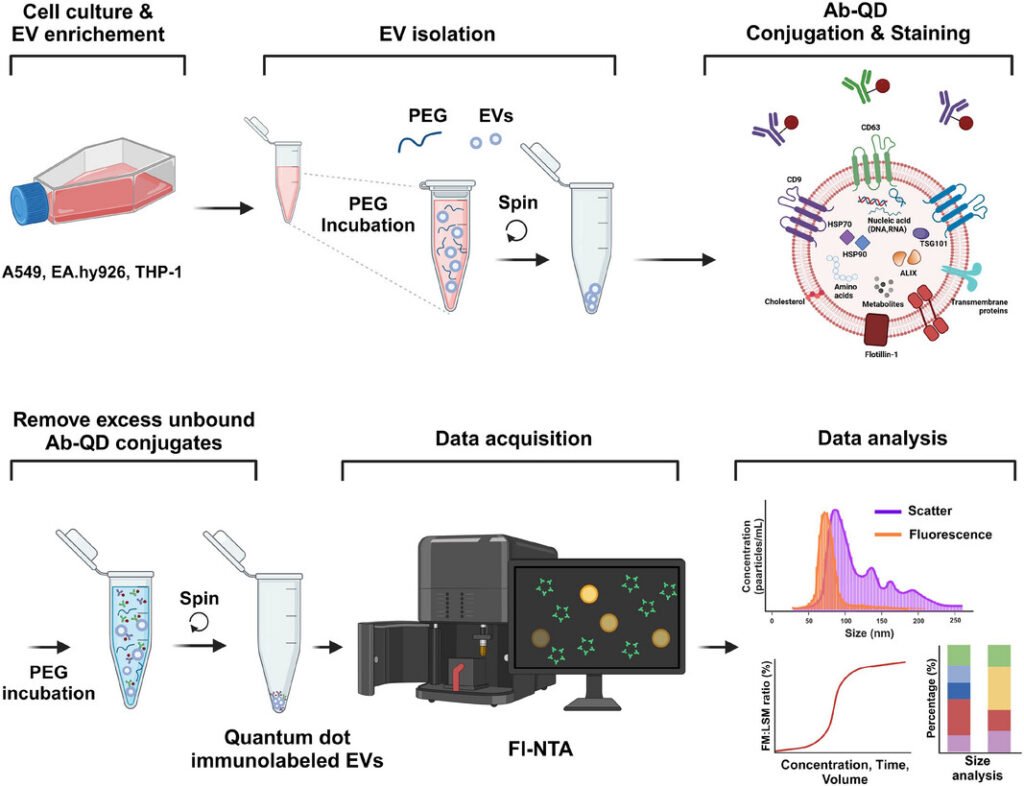Researchers from the Hanyang University in South Korea, an international partner in the CHIASMA Project, have studied extracellular vesicles (EVs); these contain a variety of biomolecules, including DNA, RNA, lipids and proteins and are known to interact with target cells to perform various functions, offering potential for therapeutic applications like drug delivery and diagnosis.
The growing interest in EVs drives the need for robust methods for EV characterisation, with most prevalent EV characterisation methods focussing on scatter-based nanoparticle tracking analysis (Sc-NTA), to measure the size and concentration of particles by tracking the scattered light from individual particles.
However, Sc-NTA has limitations in selectivity, as it detects all scattered light and fails to distinguish EVs from other nanoparticles, such as protein aggregates. To overcome this limitation, the researchers from Hanyang University used a fluorescence-based NTA (Fl-NTA) method, in which fluorescence tagging is used to selectively detect EVs, and conjugated quantum dots (QDs) to antibodies that specifically bind to EV-specific markers, in order to overcome problems of sensitivity and photostability of the hitherto utilised organic dyes (see Figure 1).
In their newly published paper entitled ‘Quantum Dot-Based Immunolabelling of Extracellular Vesicles and Detection Using Fluorescence-Based Nanoparticle Tracking Analysis’, the researchers now report a systematic optimisation of the conditions for EV immunolabelling using QDs and evaluated the advancements in detection sensitivity for Fl-NTA with respect to particle concentration and size distribution. Our findings revealed that QD-based labelling significantly enhanced the detection of EVs compared to conventional organic fluorescent dyes. Furthermore, this approach demonstrated the ability to detect smaller EV populations compared to Sc-NTA analysis.

The full paper can be found here (open access).





